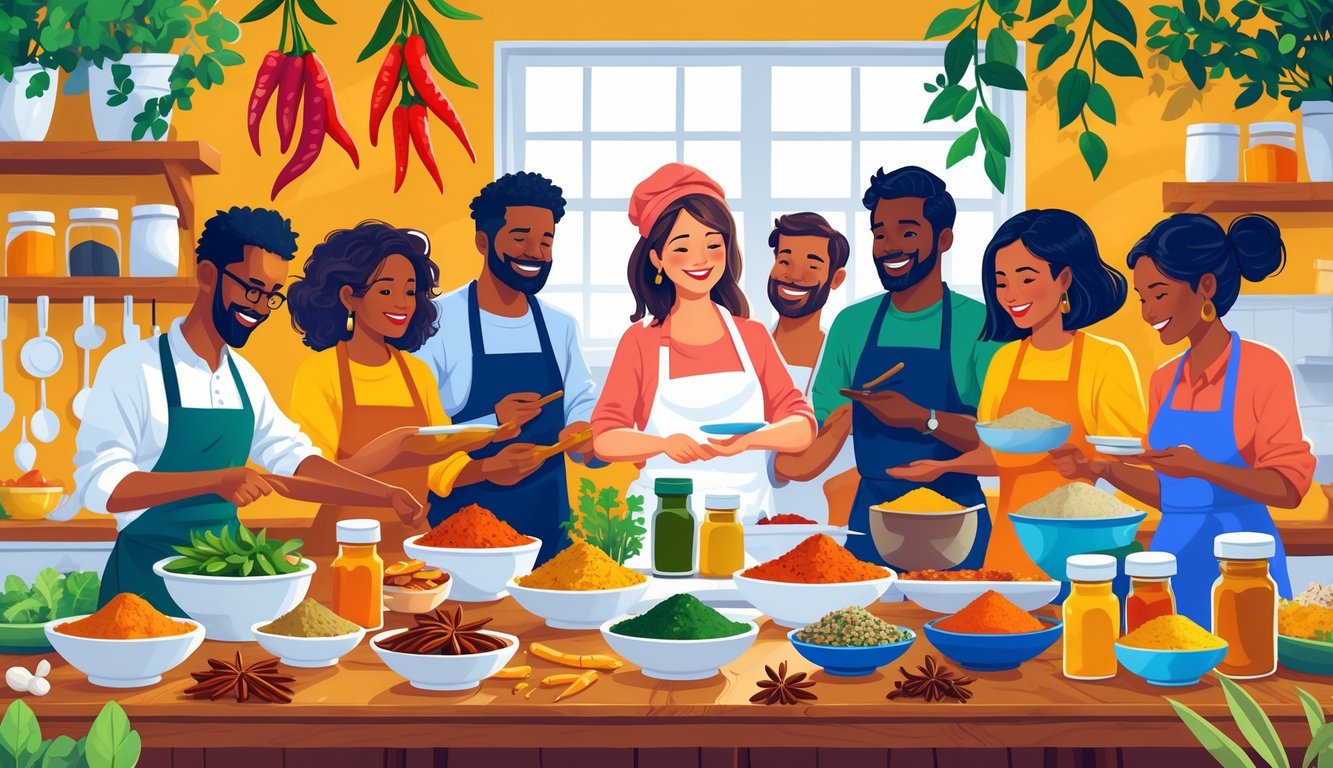
Aromatic Heroes: Garlic, Cardamom, and More
My kitchen drawer: 70% bulbs and roots, 30% random pods I bought for a recipe I never finished. Every time I fry garlic or ginger, neighbors show up like I’m giving away money. No one cares about cinnamon or cardamom until I mention it, then suddenly everyone’s at my door asking for “just a bit.”
Versatile Uses for Garlic and Ginger
If you open my fridge right now, you’ll find a sad apple and an embarrassing amount of garlic. Smash a clove, throw it in—food tastes better, and Dr. Mona Vand says it’s good for your immune system and cholesterol, though nobody at my last BBQ bragged about their LDL.
Ginger’s my failsafe. It’s the only thing that makes my stir-fries edible. Fresh in tea, raw in broth, whatever—try eating it straight if you want a real wake-up call. Supposedly, ground ginger beats some meds for nausea, but no one’s ever thanked me for that when they’re raiding my spice stash.
I once dropped a whole ginger knob in soup. Someone said it tasted “medicinal.” My throat felt awesome. Garlic and ginger are the first things I reach for, even if my friends think it’s overkill.
Cardamom, Cinnamon, and Friends
Cardamom pods cost more than my last bottle of wine. I bought green cardamom online, then realized black cardamom is a totally different beast—one’s floral, the other tastes like smoke and regret. Scandinavian bakers love cardamom in sweet rolls, my aunt dumps it in chai and biryani (she swears grandma did it), and nobody argues.
Sprinkling cinnamon on oatmeal is missing the point—cinnamon’s supposed to fill the house, not just sit in a bowl. Cassia vs. Ceylon? Even pastry chefs argue about it. Use the wrong one in stew and you’ll regret it, but try explaining that to guests. They’ll just nod.
Cloves, star anise, nutmeg—half of them gather dust till the holidays. Why does cinnamon run out before cardamom’s half gone? No idea. But the smell? It turns dinner into an event, unless you’re still using pumpkin pie spice in June, in which case, we need to talk.
Sourcing and Sustainability in the Modern Spice Trade
Tried to buy cinnamon last week, ended up doomscrolling through certifications and ingredient lists until midnight. Supply chains are a mess; “eco” and “fair” mean different things depending on who’s selling. Cumin, turmeric, pepper—everyone’s chasing the cleanest label, but the packaging still makes me feel guilty when I toss it.
Ethical Sourcing and Fair Trade
Ever tried to figure out if your paprika paid someone’s rent? It’s harder than taxes. Everyone says “ethical sourcing,” but I read this Sri Lankan exporter interview—guy said, “Customers want traceability, so now I have to do database entry just to ship cloves.” So, now we have Fairtrade and Rainforest Alliance stamps on coriander, but small farmers can’t always afford the audits. Supply chains stretch from Kerala to Rotterdam, and the sustainability headaches are endless.
Direct trade sounds great, farmers get more money, but come on—how does a few extra cents beat out greedy brokers? My neighbor only buys “single origin” cardamom now, says she doesn’t trust blends. Until traceability gets easier, we’re all just guessing and hoping.
Eco-Friendly Packaging and Agricultural Practices
Why is every spice jar plastic? Glass or paper would make sense, but nope. I bought turmeric in a “compostable” pouch at the co-op—it started disintegrating before I got home, but at least it wasn’t plastic. Manufacturers brag about “recyclable PET” and “lower carbon footprint” (industry talk here), but my drawer full of mismatched lids says otherwise.
I called a spice supplier—she ranted about “regenerative agriculture” being impossible with nutmeg trees. Fewer pesticides and shade-grown crops sound good until fungus wipes out your pepper harvest. Some big brands say “no additives, sustainably farmed,” but unless I FaceTime a farmer in Vietnam, how would I know? I just want cumin that won’t trash the planet or explode in my kitchen.
Tips for Cooking with New Spices
Ever tried miracle berries or star anise and wrecked a whole meal? Same. Getting flavor right isn’t about hoarding jars, it’s about figuring out what works. I forget I own fenugreek until someone brings up a curry fail.
Mastering Spice Pairings for Unique Taste
I’ve ruined enough dinners to know you can’t just mix cardamom and Szechuan pepper and call it “fusion.” Balance is everything, or so Sujan Sarkar (chef at MICHELIN-starred Indienne) told me—“Spices should build complexity, not just blast you with flavor” (actual advice here). I’ll trust him with my lunch, but cumin doesn’t always play nice.
My “system” is sticky notes: laurel & allspice on beef, sumac with eggplant, Ras El Hanout on chicken—no logic, just chaos. Start tiny, especially with trendy blends like Berbere. I dumped a tablespoon on potatoes last week—tasted like dirt. My neighbor (a dietitian) says fresh-ground always wins, but nobody warns you about cleaning the grinder.
Flavor Enhancements for Roasted Meats and Beverages
I whisked garam masala into coffee once. Don’t. Some spices work everywhere, most don’t. For roasted meats, blooming the blend in hot oil makes all the difference—don’t skip it unless you enjoy wasting money (blooming tip here). You’ll know if it’s working by the smell.
Smoked salt on brisket, clove in pork, star anise with duck—sure, but go easy. More than 1/8 teaspoon of clove per pound and you’re eating cough drops. In drinks, whole spices steep well, but ground cinnamon just sludges up the cup. If ginger cider burns your mouth, you went overboard—a juicer trick calms the heat, according to my herbalist friend. I forgot to toast spices for chai once—flat, boring, couldn’t fix it.



